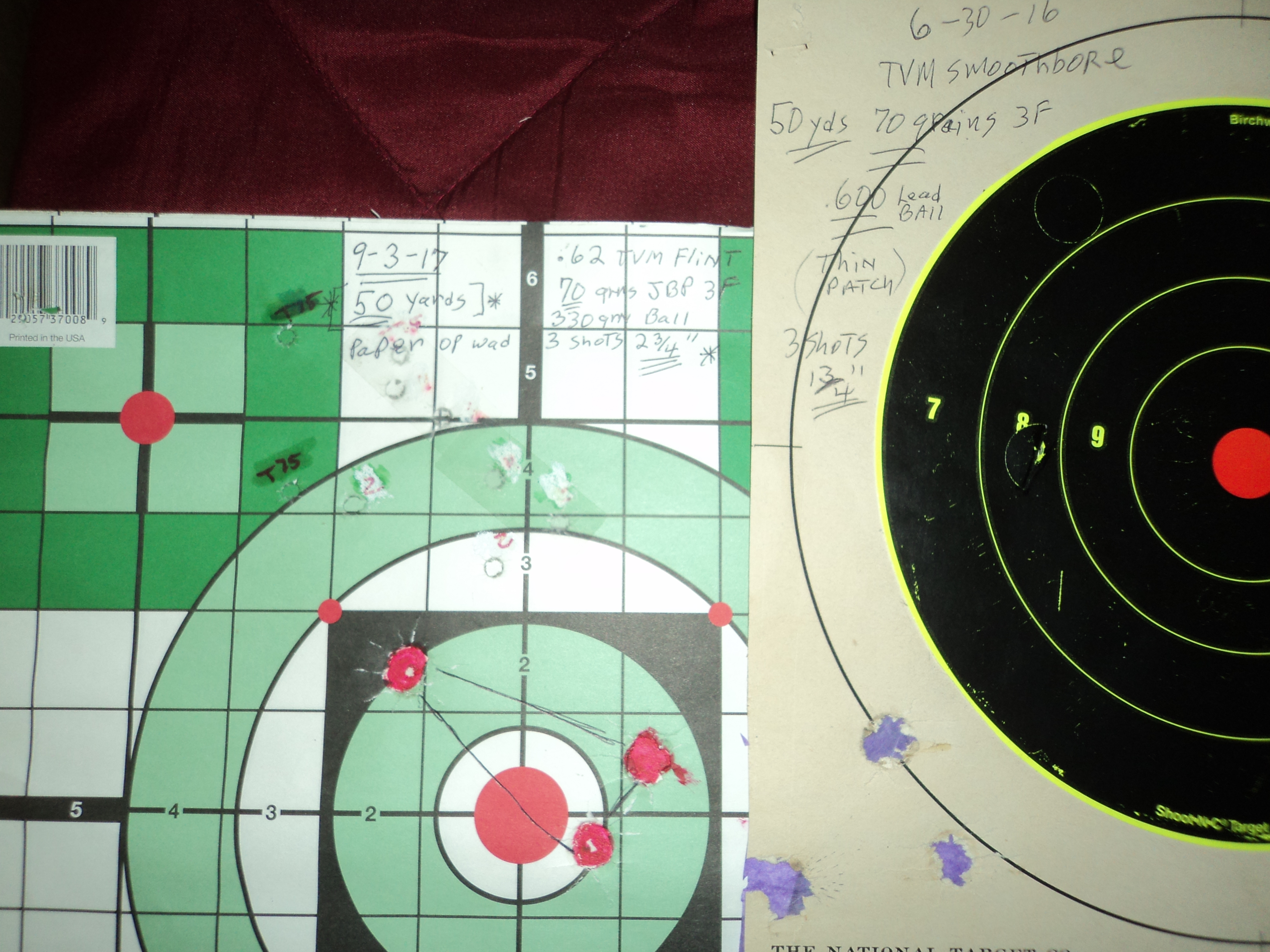11th corps
40 Cal.
- Joined
- Mar 26, 2005
- Messages
- 683
- Reaction score
- 678
Mike B on duelist 1954 has a theory on increasing accuracy of smoothbore loads. He believes that 110 grains of 2F creates a cone of gas that stabilizes the ball as it flies to the target as opposed to lighter charges.
I shot my Trade Gun today and while I didn't get to that hot a load I did increase from 60, then 70 and finally 80 grains of 3F behind by .600 round balls. It did seem to give me an increase in target accuracy.
Do you smooth bore shooters believe this to be the case?
I shot my Trade Gun today and while I didn't get to that hot a load I did increase from 60, then 70 and finally 80 grains of 3F behind by .600 round balls. It did seem to give me an increase in target accuracy.
Do you smooth bore shooters believe this to be the case?

















